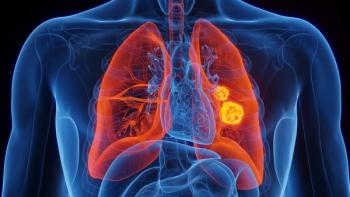
- October 2024
- Volume 90
- Issue 10
Did Vampire Myths Originate From a Blood Disorder?
Key Takeaways
- Porphyria, a hereditary disorder, causes porphyrin buildup, affecting the nervous system and skin, and is linked to vampire legends.
- Symptoms of porphyria include severe pain, mental changes, sun sensitivity, and red urine, paralleling vampire myth characteristics.
With Halloween approaching, spooky stories such as vampire myths are making the rounds. However, vampire legends could be based partly on historical misunderstandings of a blood disorder called porphyria. In individuals with the rare, inherited condition, exposure to sunlight can cause blisters and skin sensitivity.1,2
Legends of vampires have existed for centuries, although Bram Stoker’s novel Dracula, published in 1897, became the cultural touchstone for these fictional creatures. However, the medical origin of these legends appears to be porphyria, which was more common among European royalty and nobility.1
Porphyria encompasses a group of rare disorders that result from a buildup of natural chemicals known as porphyrins. It can cause significant issues in the nervous system and skin. According to research data published by Mayo Clinic, porphyrins are needed to make heme, which is part of hemoglobin. For the body to produce heme, 8 enzymes are required, without which porphyrins build up.3
Porphyria is a hereditary disease that can be passed on from parent to child, although experts note that some carriers of a gene variant will never develop porphyria.2 Importantly, however, there is no way to prevent the development of porphyria other than avoiding triggers to mitigate symptoms.3 The disorder has 2 general types: acute porphyria, which quickly affects the nervous system, and cutaneous porphyria, which impacts the skin. However, additional forms of porphyria can affect both the nervous system and the skin.1,2
Symptoms of acute porphyria include severe pain in the belly, legs, or back; muscle pain; mental changes; high blood pressure; and seizures. Cutaneous porphyria symptoms include sensitivity to the sun and burning pain on the skin; sudden, painful skin redness; blisters on exposed skin; fragile skin with changes in skin color; hair overgrowth in affected areas; and itching. Both types share symptoms of red or brown urine.3
Porphyria developed the nickname of “vampire disease” due to symptoms also attributed to vampires in legends and modern pop culture. The shared symptoms include sensitivity to sunlight; gum decay, resulting in more exposed teeth; red urine, historically attributed to the incorrect belief that these patients drank blood; and an aversion to garlic due to its ability to trigger porphyria attacks.1,2
Despite its nickname, the disease is not a myth and remains incurable. The most common treatments for individuals with porphyria include pain control, fluids, and avoidance of drugs and chemicals that provoke acute attacks. However, stem cell transplants have shown minor success among individuals with the inherited disease.1
REFERENCES
1. Hefferon M. Vampire myths originated with a real blood disorder. Queen’s University. June 29, 2020. Accessed September 18, 2024. https://www.queensu.ca/gazette/stories/vampire-myths-originated-real-blood-disorder
2. Porphyria: the facts behind the so-called vampire disease. Medicover Genetics. October 19, 2022. Accessed September 18, 2024. https://medicover-genetics.com/porphyria-the-facts-behind-the-so-calledvampire-disease/
3. Porphyria. Mayo Clinic. April 5, 2023. Accessed September 18, 2024. https://www.mayoclinic.org/diseases-conditions/porphyria/symptoms-causes/syc-20356066
Articles in this issue
12 months ago
October 2024 Condition Watch: COVID-1912 months ago
Pharmacists Can Directly Improve Health Literacy12 months ago
Conversations About SDOH Are Difficult but Vitalabout 1 year ago
Lawsuit by Deceased Man’s Estate Focuses on Opioid Dispensingabout 1 year ago
The Dilemma of Childhood Vaccines Post Pandemicabout 1 year ago
Communication Skills Are Crucial for Patient Safetyabout 1 year ago
Nexletol From Esperionabout 1 year ago
Advise Patients About Routine Ophthalmic HealthNewsletter
Stay informed on drug updates, treatment guidelines, and pharmacy practice trends—subscribe to Pharmacy Times for weekly clinical insights.
















































































































































































































